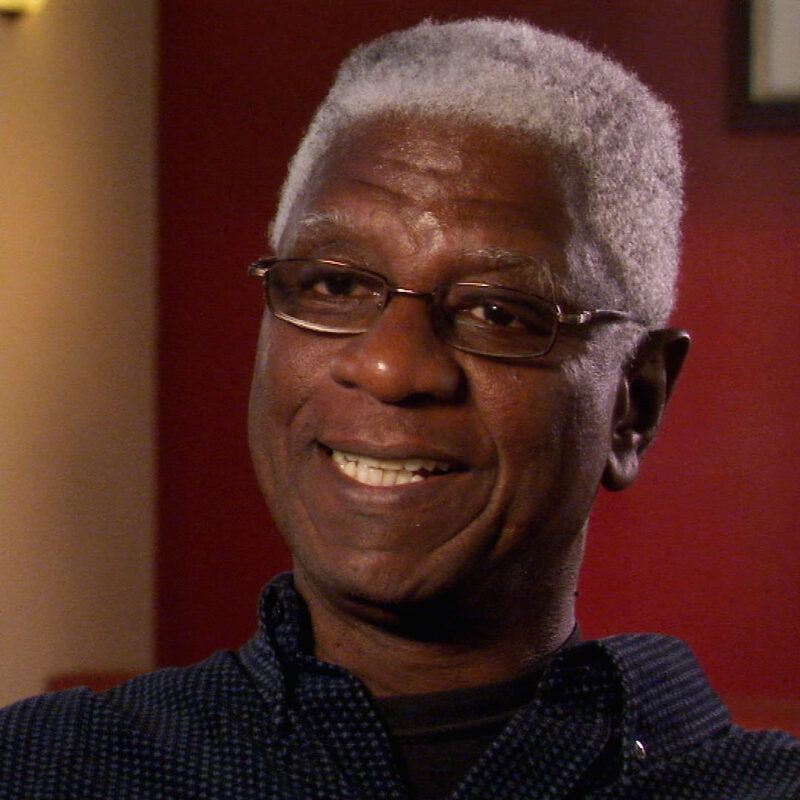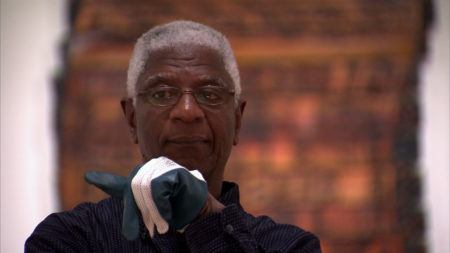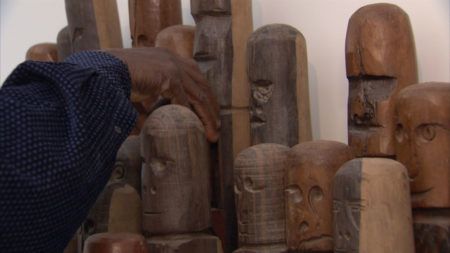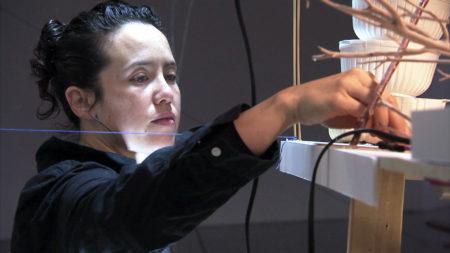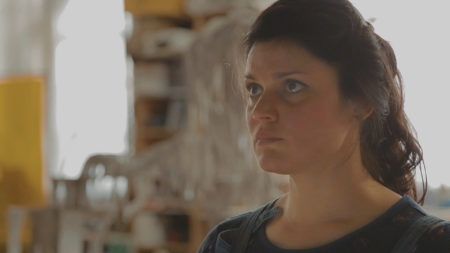Continue playing
(Time remaining: )
Play from beginning
Continue playing "{{ controller.videos[controller.getVideo(controller.currentVideo)].segmentParentTitle}}"
{{controller.videos[controller.getVideo(controller.currentVideo)].title}} has ended.
Language & SymbolsEl Anatsui
Filmed in 2011 at The Museum of Modern Art in Hayama, Japan, El Anatsui discusses the role of language and symbols in his artwork. When naming works such as Gli (2010), Anatsui often uses his native language of Ewe because Ewe words can have a range of meanings when pronounced differently. Anatsui also describes the formative experience of discovering adinkra symbols, a West African system of abstract symbols that represent specific concepts or aphorisms.
More information and creditsCredits
Producer: Ian Forster. Consulting Producer: Wesley Miller & Nick Ravich. Interview: Susan Sollins. Camera: Takahisa Araki & Joel Shapiro. Sound: Steve Bores. Editor: Morgan Riles. Artwork Courtesy: El Anatsui & Museum for African Art. Special Thanks: Lisa Binder, The Museum of Modern Art, Hayama, Japan, Jack Shainman Gallery & Wellesley College. Theme Music: Peter Foley.
Closed captionsAvailable in English, German, Romanian, Italian, Japanese, Korean, Chinese, Italian
Through the Art21 Translation Project, multilingual audiences from around the globe can contribute translations, making Art21 films more accessible worldwide. Translate this video now.
Interested in showing this film in an exhibition or public screening? To license this video please visit Licensing & Reproduction.
El Anatsui’s sculptures are mutable in form, conceived to be so free and flexible that they can be shaped in any way and altered in appearance for each installation. Working with wood, clay, metal, and—most recently—the discarded metal caps of liquor bottles, Anatsui breaks with sculpture’s traditional adherence to forms of fixed shape while visually referencing the history of abstraction in African and European art. The colorful and densely patterned fields of the works assembled from discarded liquor-bottle caps also trace a broader story of colonial and postcolonial economic and cultural exchange in Africa, told in the history of cast-off materials. The sculptures in wood and ceramics introduce ideas about the function of objects (their destruction, transformation, and regeneration) in everyday life, and the role of language in deciphering visual symbols.
El Anatsui
El Anatsui
El Anatsui
Artist at Work
Experimental Sculpture
Sarah Sze
Matthew Ritchie

